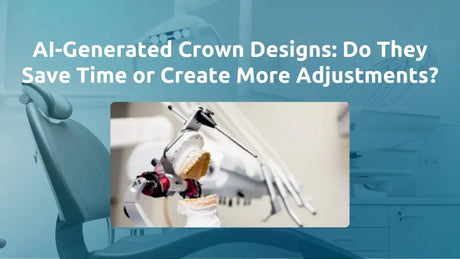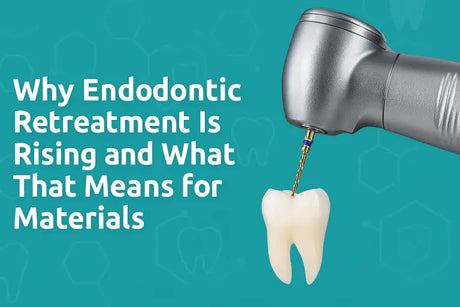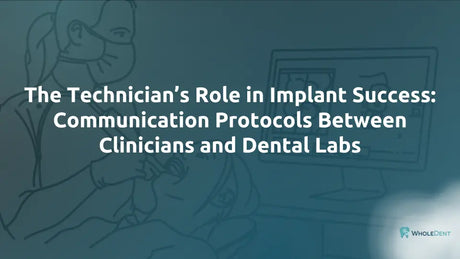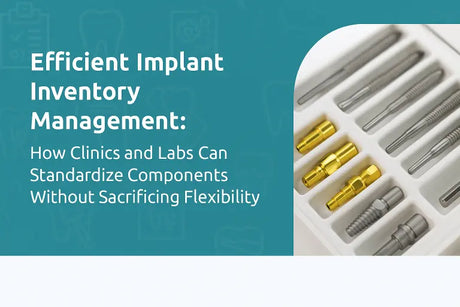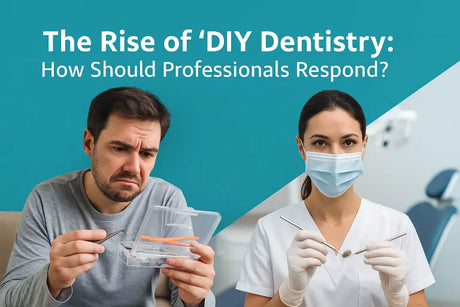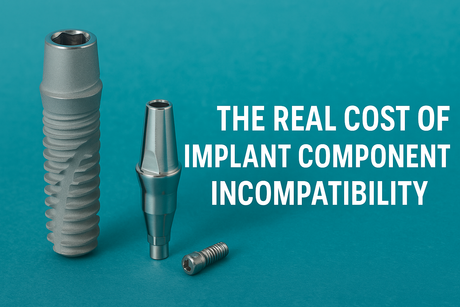The Real Cost of Implant Component Incompatibility
When a patient walks into our practice, we’re focused on delivering a functional, esthetic, and long-lasting result. But one thing I’ve learned after years in implant dentistry is that even the most perfectly placed implant can run into trouble - not because of bone density or surgical skill, but because of something that should be simple: the compatibility between implant components.
I’m not talking about choosing a cheap abutment from a supplier you’ve never heard of. I’m talking about subtle mismatches in taper angle, hex depth, screw design, or even milling tolerance - and how those small inconsistencies can lead to big problems down the road.
At WholeDent, we’ve seen it all. We work closely with clinics across Europe and beyond, and we hear the same frustrations over and over again: “The crown didn’t seat.” “The screw kept loosening.” “The abutment fractured during torque.” In almost every case, the issue wasn’t technique. It was component incompatibility.
Let me walk you through why this matters, what it really costs you, and how we at WholeDent help our clients avoid it completely.
Why Implant Compatibility Matters More Than Most Realize
Most clinicians assume that if two components look the same, internal hex, conical connection, same diameter, they should work together. But that assumption can cost you.
In the world of implant prosthetics, compatibility is not just about the geometry. It’s about tolerances down to microns. It’s about the precision of machining. It’s about the torque values the system is rated for. Even a tenth of a millimeter difference can result in misfit, micro-gaps, or mechanical stress that leads to failure.
You may not see it right away, but your lab might.
You might not feel it at first, but your patient will - when the screw loosens, the crown tilts, or the soft tissue becomes inflamed.
Real Clinical Consequences of Mismatched Components
Here are just a few examples of what I’ve personally seen, or what clinics we work with have reported:
-
Micro-movements at the implant abutment junction - This leads to inflammation, screw loosening, and eventual bone loss
-
Incorrect seating depth of the abutment - Causes improper emergence profile and esthetic compromise
-
Stripped screws or fractured heads - Usually due to mismatched threading or incorrect material hardness
-
Inaccurate torque readings - When the screwdriver does not match the abutment or implant interface, leading to under or over-tightening
-
Prosthetic misalignment - Even a minor offset in the internal connection geometry can affect occlusion and long-term stability
These issues are not just frustrating. They are time-consuming, financially draining, and reputation-damaging.
How Incompatibility Hurts You Financially
Let’s break down the actual cost of using mismatched or poorly verified implant components:
-
Extra chair time - Every adjustment or re-tightening visit costs you chair time - and that time is your most valuable asset
-
Lab remakes - If the fit is wrong or the margin is off, your lab has to remake the crown or abutment, and that costs money
-
Material waste - Components that don’t fit cannot be reused or returned
-
Patient dissatisfaction - The worst cost of all - loss of trust, reputation, and potential referrals
-
Legal liability - In some regions, using non-verified or off-label components can expose you to legal risk in the event of failure
And ironically, many of these issues start because someone wanted to “save money” by mixing systems or buying from unverified sources.
How WholeDent Approaches Compatibility the Right Way
At WholeDent, we do not manufacture implants - we carefully curate them.
That means we choose to distribute implant systems and components that are fully compatible within their own systems, and clearly labeled when cross-compatible with others. We vet every product line for connection integrity, manufacturing tolerance, and long-term prosthetic fit.
Here is how we ensure reliability:
-
Precision machining from ISO 13485 certified facilities
-
Full documentation and batch traceability
-
Tight internal quality control and prosthetic testing
-
Clear labeling of compatibility by platform and diameter
-
In-house knowledge to help match parts correctly
When a clinician orders from WholeDent, they know exactly what they’re getting - and how it fits.
Real Case: A Costly Screw Loosening That Could Have Been Avoided
A client in Germany came to us after repeated screw loosening on a multi-unit bridge. The implant platform was standard internal hex. The abutments were from a different brand that claimed compatibility.
They “fit” - but the friction lock wasn’t quite right. The abutment rotated microscopically under load, the screw would back out, and within 6 months the case had to be redone.
When they switched to a matched system we carry, the problem disappeared.
No more adjustments. No more lost time. Just stable, predictable results.
How to Protect Yourself from Compatibility Issues
Here’s what I always recommend to colleagues:
-
Stick to one system where possible - Fewer mixups, fewer surprises, fewer headaches.
-
Know the connection geometry in detail - Not just “conical” or “hex”, know the taper angle, depth, screw type, and thread design.
-
Ask your distributor about part verification - If they cannot provide compatibility charts or specs, find someone who can.
-
Use torque wrenches and screwdrivers matched to your system - Even drivers can strip or misread if they are off by just a fraction.
-
Educate your team and lab - Make sure everyone knows which platforms you use and how to confirm fit.
Final Thoughts: You Don’t Just Buy Parts - You Buy Predictability
At the end of the day, the most expensive implant component is the one that causes a failure.
That is why we always say: you are not just buying a titanium abutment or a zirconia sleeve. You are buying peace of mind, predictable outcomes, and confidence in the chair.
At WholeDent, we take that seriously. We work with clinicians every day who trust us not just for the products we offer, but for the clarity and compatibility we provide.
And when things just fit, from the torque driver to the final crown, everything else becomes easier.








